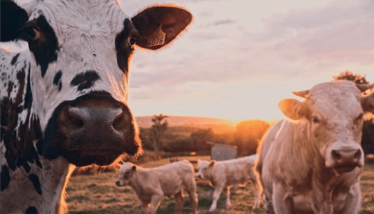Over the Limit Latte?
Cows fed with industrial hemp produce milk containing cannabinoids
Georgia Hulme | | News

Industrial hemp is becoming a popular choice of livestock feedstuffs, but what effect does it have on the food chain? In 2011 and 2015, the European Food Safety Authority concluded that feeding industrial hemp to food-producing animals can result in cannabinoid transfer into milk – but further investigation was needed…
In a recent study, researchers from Germany conducted a feeding experiment with 10 dairy cows (1). One group were fed between 840 and 1680 grams of cannabinoid-rich industrial hemp silage, where the content of psychoactive Δ9-THC was 0.12 percent, and the other group were fed a low cannabinoid variety. In addition, animal health and behavior was monitored – including heart rate and respiration.
Cows fed with very low cannabinoid concentrations suffered no significant health consequences. In comparison, the cows fed with high levels of THC produced less milk and exhibited a negative change in heart rate, respiratory rate, and behavior. From the second day, they ate less and produced much less milk, with increased salivation, tongue play and reddening of the nictitating membrane of the cow’s eyes.
The cows’ milk, blood plasma, and feces were also collected and analyzed, with LC-MS/MS being used to quantify cannabinoid concentration. “LC-MS/MS allowed a precise distinction between the non-psychoactive precursor THCA from the psychoactive THC in the different samples,” says co-author Bettina Wagner, from the German Federal Institute for Risk Assessment. “In some of the existing analytical methods, the inactive THCA is converted to THC, which is responsible for the known psychoactive effects – so this distinction was fundamental.”
The team detected concentrations of up to 316 µg THC per kg of milk in these same animals – levels that could potentially exceed the acute reference dose (ARfD) in some population groups in several milk consumption scenarios. (The ARfD corresponds to the estimated maximum amount of THC that can be ingested in the course of one day without an appreciable health risk.)
Wagner highlights the need for further research; the study used industrial hemp that contained a variety of different cannabinoids, which made it difficult to assign clinical symptoms observed in the cows to individual cannabinoids. Further, the hemp also contained secondary plant compounds that may have had an effect on animal health. Analytical methods are currently being developed to identify different cannabinoids in different matrices.
- B Wagner et al., Nature Food, 3, 921 (2022). DOI: 10.1038/s43016-022-00623-7












